Abbeys in Yorkshire
Yorkshire, a county renowned for its historical heritage, offers a unique glimpse into England's monastic past through its impressive collection of abbey ruins.
The remnants of these abbeys are more than mere relics; they stand as a testament to the region's rich ecclesiastical history and its role during the medieval period.
These abbeys, some of which are among the best-preserved in England, were once at the heart of English religious life and served as centres of learning, culture, and power.
Rievaulx Abbey
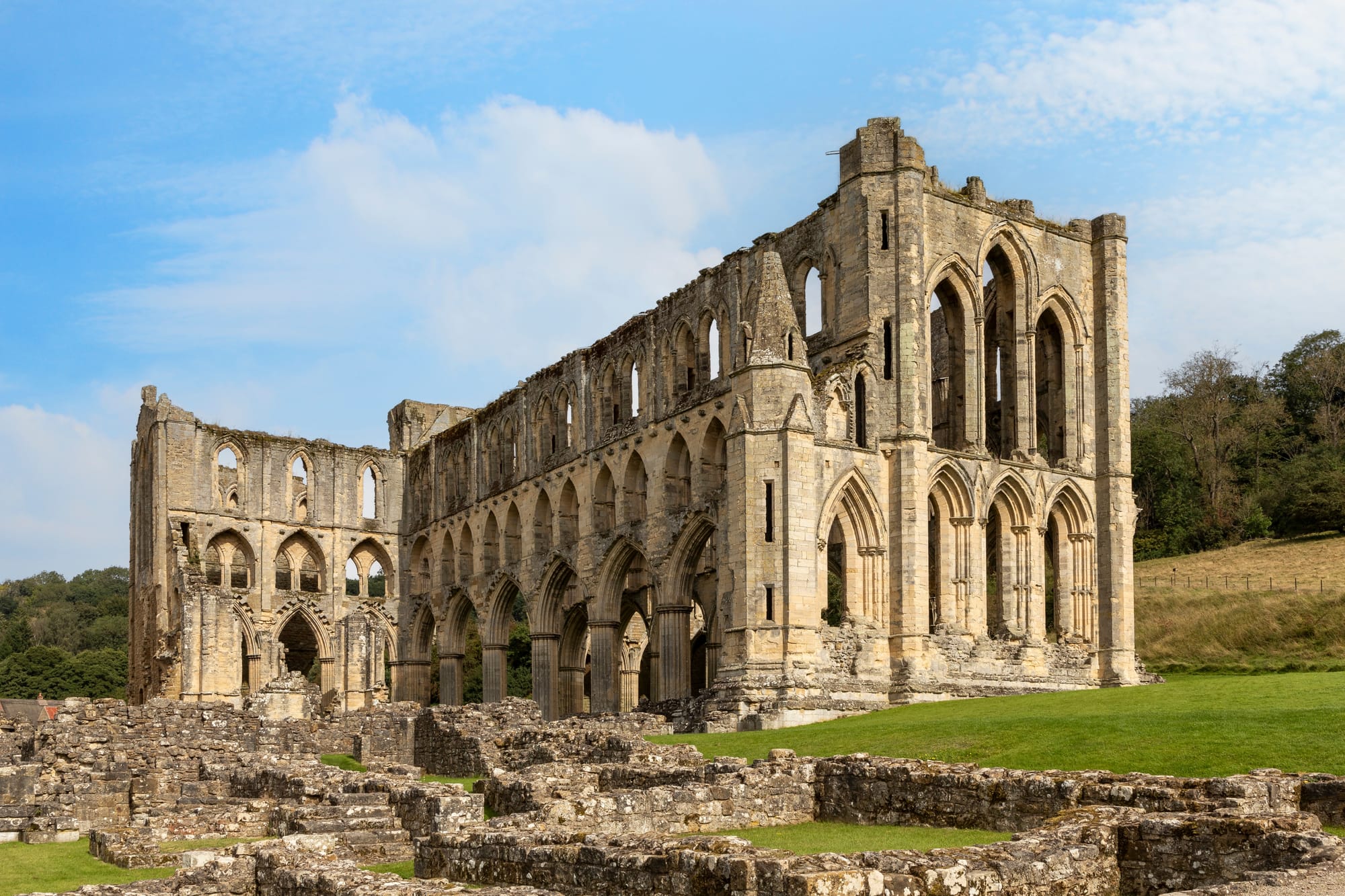
Nestled in a remote valley within the North York Moors, Rievaulx Abbey boasts a rich history paired with serene beauty, making it a notable point of interest.
Key Details
- Founded: 1131
- Location: Near Helmsley, North Yorkshire
- Disestablished: 1538 during the Dissolution of the Monasteries
- Status: Scheduled Ancient Monument
Historical Significance
Rievaulx Abbey held a pivotal role as the first Cistercian abbey of the north in England. The Abbey rose to prominence as a centre of monasticism, spiritual development, and economic power throughout Britain. Over its centuries of operation, it accumulated considerable wealth and influence until its seizure under Henry VIII's rule. The Abbey stands as a testament to the sheer scale of monastic life in medieval England.
Visitor Information
- Address: Rievaulx, Nr Helmsley, North Yorkshire, YO62 5LB
- Opening Hours: Visitors are welcome throughout the year, with quietest times being before 11am and after 2pm.
- Tickets: Discounts are available for online bookings.
Note: The Abbey's extensive ruins can be explored alongside its museum, though it is advisable to check for any access updates due to conservation efforts or events.
Whitby Abbey
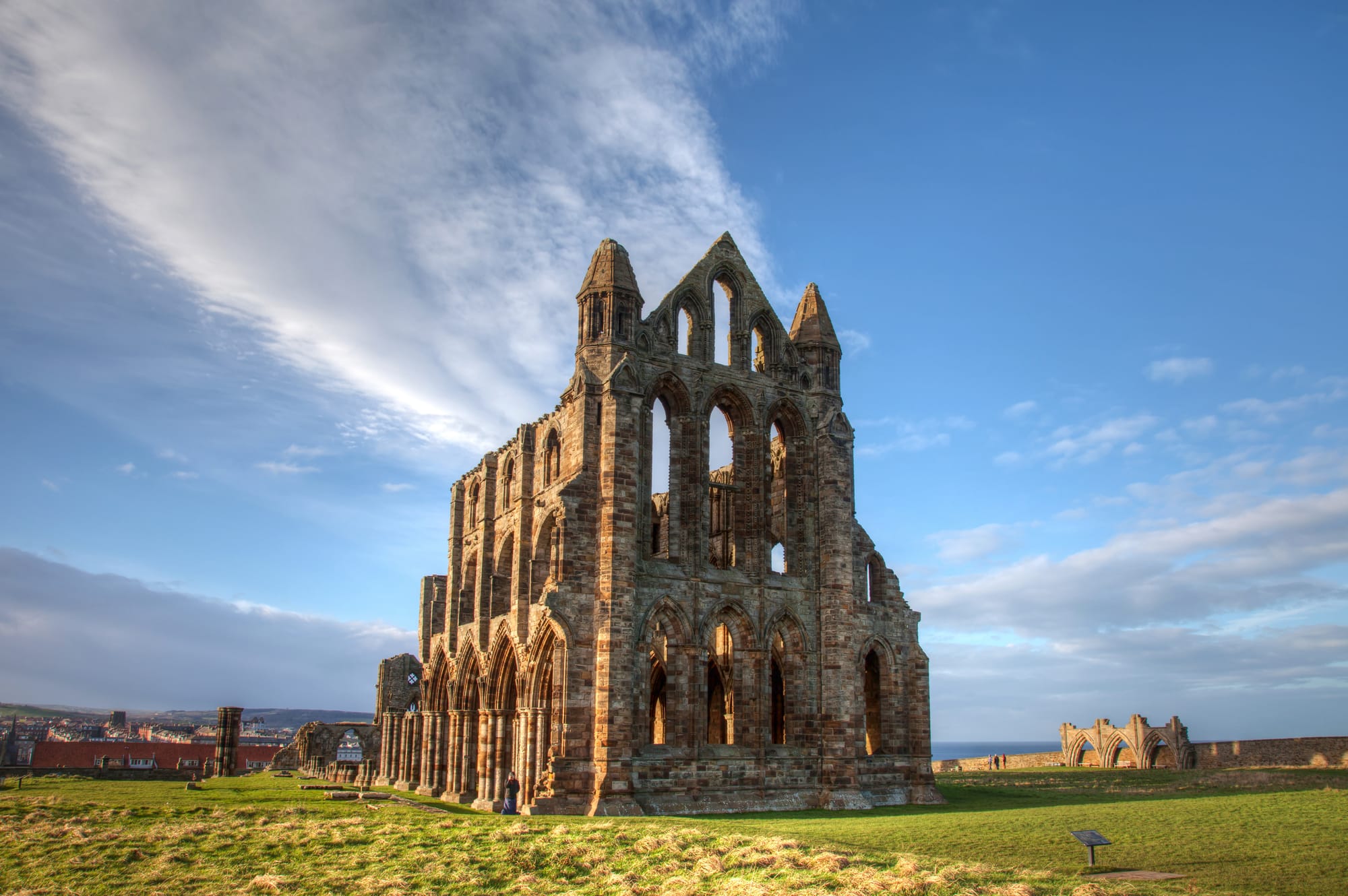
Whitby Abbey stands as a testament to a rich history that spans centuries, offering insights into the early Christian Church in England and acting as a beacon of cultural inspiration.
Key Details
Whitby Abbey is a defunct Benedictine abbey and a former 7th-century Christian monastery located in North Yorkshire. Perched on a clifftop, it overlooks the North Sea.
- Location: Abbey Lane, Whitby, North Yorkshire, YO22 4JT
- Founding Year: Established in 657 AD
- Dissolution: 1539, during the Dissolution of the Monasteries
Historical Significance
Originally founded by St. Hilda, Whitby Abbey held considerable religious influence in the Anglo-Saxon world. The abbey was the location of the pivotal Synod of Whitby in 664, which aligned the English Church with Rome on the matter of calculating Easter. Whitby Abbey also has literary connections, as it inspired Bram Stoker's "Dracula."
- Celtic Church Influence: Central to the Anglo-Saxon Church, holding historic clerical meetings
- Viking Raids: Fell in 867 and lay in ruins until its Norman reconstruction in the 11th century
Visitor Information
- Opening Times: Wednesday to Sunday, 10 am to 4 pm
- Admission: Fee applicable; online booking available with a discount
- Facilities: Gift shop and café on site
- Contact:
- Phone: +44 01947 603568
- Email: [email protected]
Byland Abbey
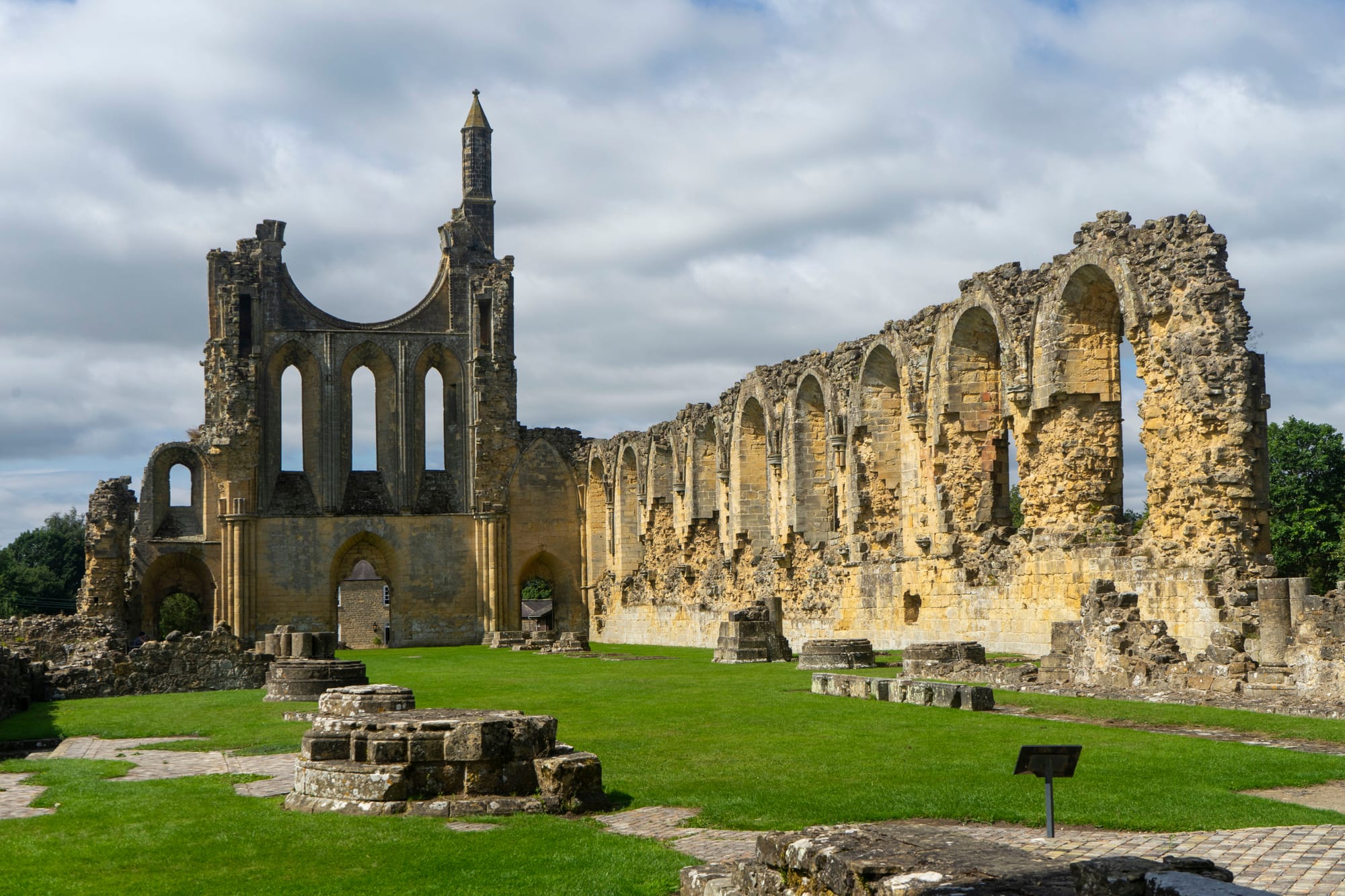
Byland Abbey, once one of England's greatest monasteries, stands as a testament to the religious fervour of the 12th century. Its ruins continue to inspire visitors within the tranquil setting of the North York Moors.
Key Details
- Location: Coxwold, North Yorkshire, YO61 4BD
- Founded: January 1135
- Order: Initially Savigniac, absorbed by the Cistercian order in 1147
Historical Significance
Byland Abbey played a pivotal role in the monastic movement in England. It exerted considerable influence on the design of Cistercian buildings. The abbey's vast church once exhibited impressive architectural features, comparable to the grandeur of the great European cathedrals. The abbey's rapid expansion showcases the period's spiritual commitment and architectural ambition.
Visitor Information
- Access: Nestled in the North York Moors National Park, suitable for family visits, walking, or cycling.
- Coordinates: 54.2031°N 1.1592°W
- Facilities: English Heritage provides visitor facilities with details on the abbey's history.
Fountains Abbey
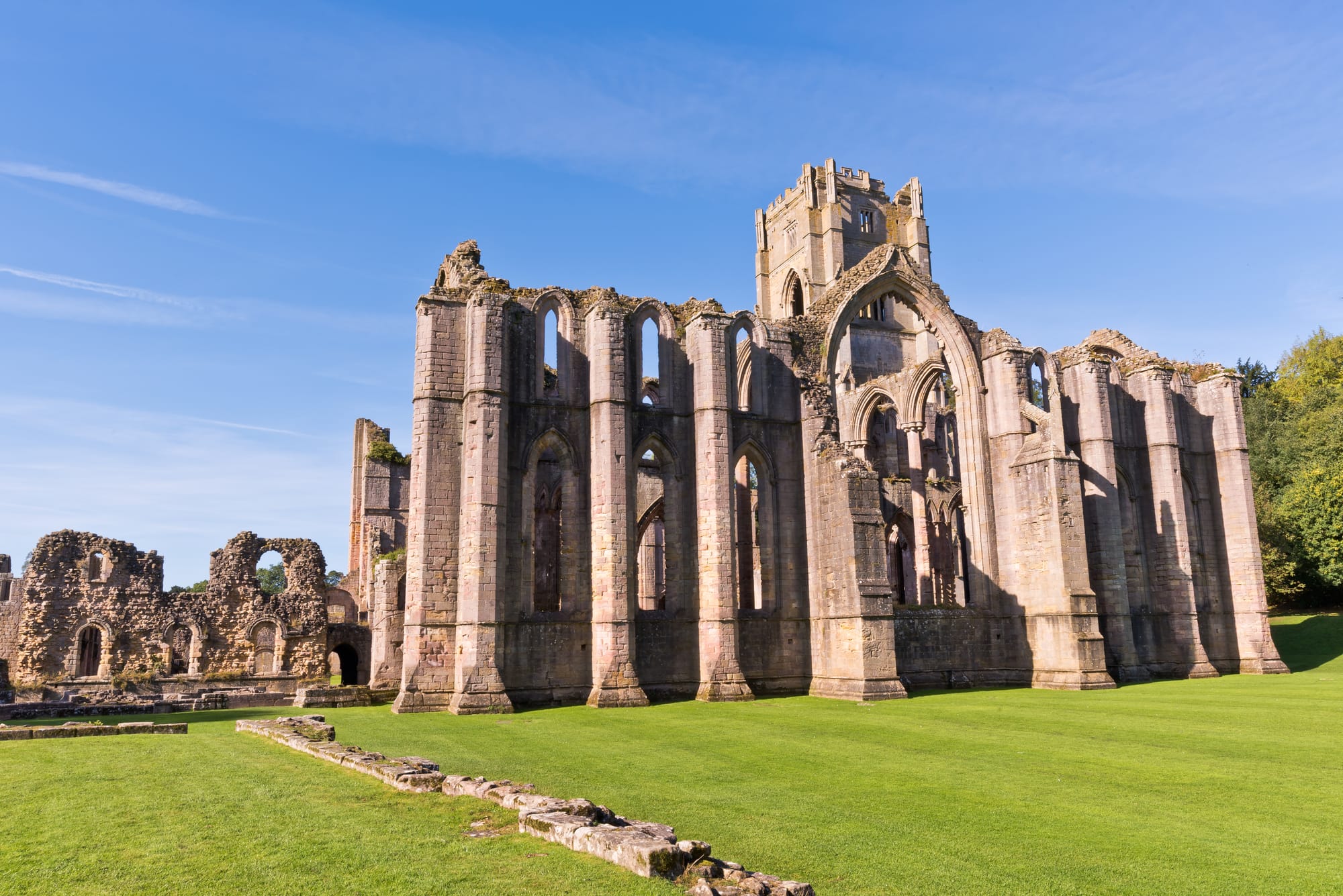
Nestled in the rolling landscape of North Yorkshire, Fountains Abbey stands as a testament to the grandeur of monastic life in medieval England, now inviting visitors to explore its extensive ruins and discover the history within.
Key Details
- Location: Ripon, North Yorkshire, HG4 3DY
- Founded: 1132
- Dissolution: 1539, during Henry VIII’s Dissolution of the Monasteries
- Status: Ruined Cistercian Monastery
- Ownership: Managed by the National Trust
Historical Significance
Fountains Abbey is one of England's largest and best-preserved Cistercian monastery ruins. Founded by a group of dissenting monks in 1132, it thrived for over 400 years until the Dissolution of the Monasteries. The abbey is a physical chronicle of ecclesiastical power, daily monastic life, and the significant role religion played during that period. The site, together with the adjoining Studley Royal Water Garden, is recognised as a UNESCO World Heritage Site, symbolising cultural and historical achievements stretching beyond Yorkshire.
Visitor Information
- Opening Hours: Varied by season; check the National Trust website for details.
- Admissions: Charges apply; National Trust members can visit for free.
- Facilities: Visitor centre, shop, tea-room.
- Accessibility: Accessible to wheelchairs and pushchairs with some limitations due to natural terrain.
- Parking: Available at the visitor centre and West Gate car park.
- Contact: 01765 608888 | [email protected]
St Mary's Abbey, York
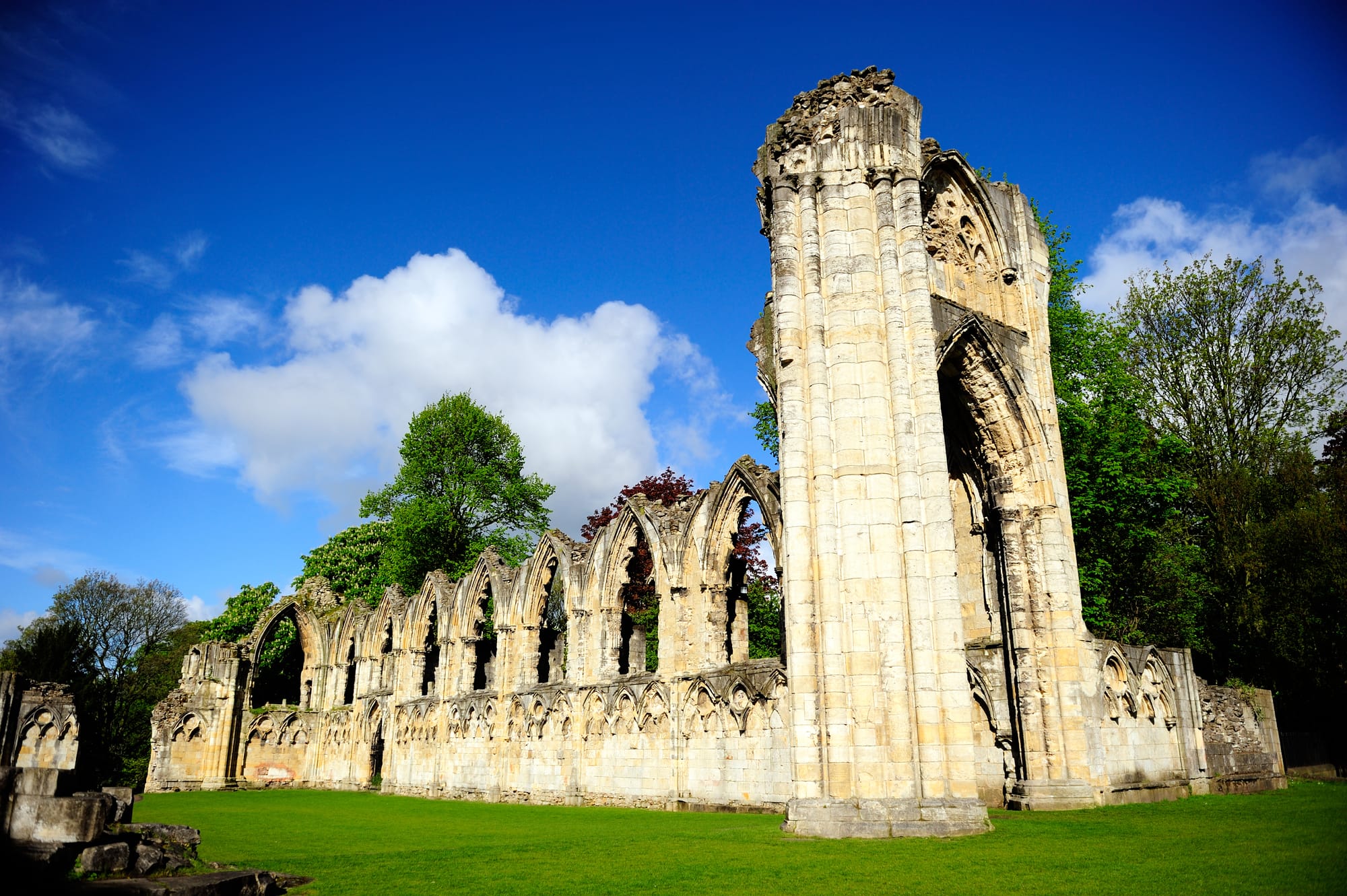
St Mary's Abbey in York stands as a testament to the religious and historical wealth of Yorkshire. Its ruins provide a window into the medieval monastic life and its impact on the region.
Key Details
- Location: York, England
- Established: Founded in 1055, re-founded in 1088
- Dissolved: 1540
Historical Significance
St Mary's Abbey was originally built in 1055 and dedicated to St Olaf of Norway. Following the Norman Conquest, it was re-founded by King William Rufus in 1088 and rededicated to the Virgin Mary. The construction of the surviving ruins commenced in 1270, symbolising the wealth and power of the Benedictines during the medieval period. The Abbey played a crucial role in the religious and economic activities of northern England until its dissolution in 1540 under the reign of King Henry VIII.
Visitor Information
- Accessibility: The remains of St Mary's Abbey are located within York Museum Gardens.
- Present Uses: York Museum Gardens, Yorkshire Museum (houses Abbey's artefacts)
- Excavation: First excavated by the Yorkshire Philosophical Society in the 1820s.
The site is open to visitors who wish to explore the remaining precinct walls, gatehouse, and the abbey church ruins, which still showcase parts of the nave and crossing. The grounds offer a peaceful retreat in the centre of York, inviting guests to ponder the historical significance of the site.
Bolton Abbey
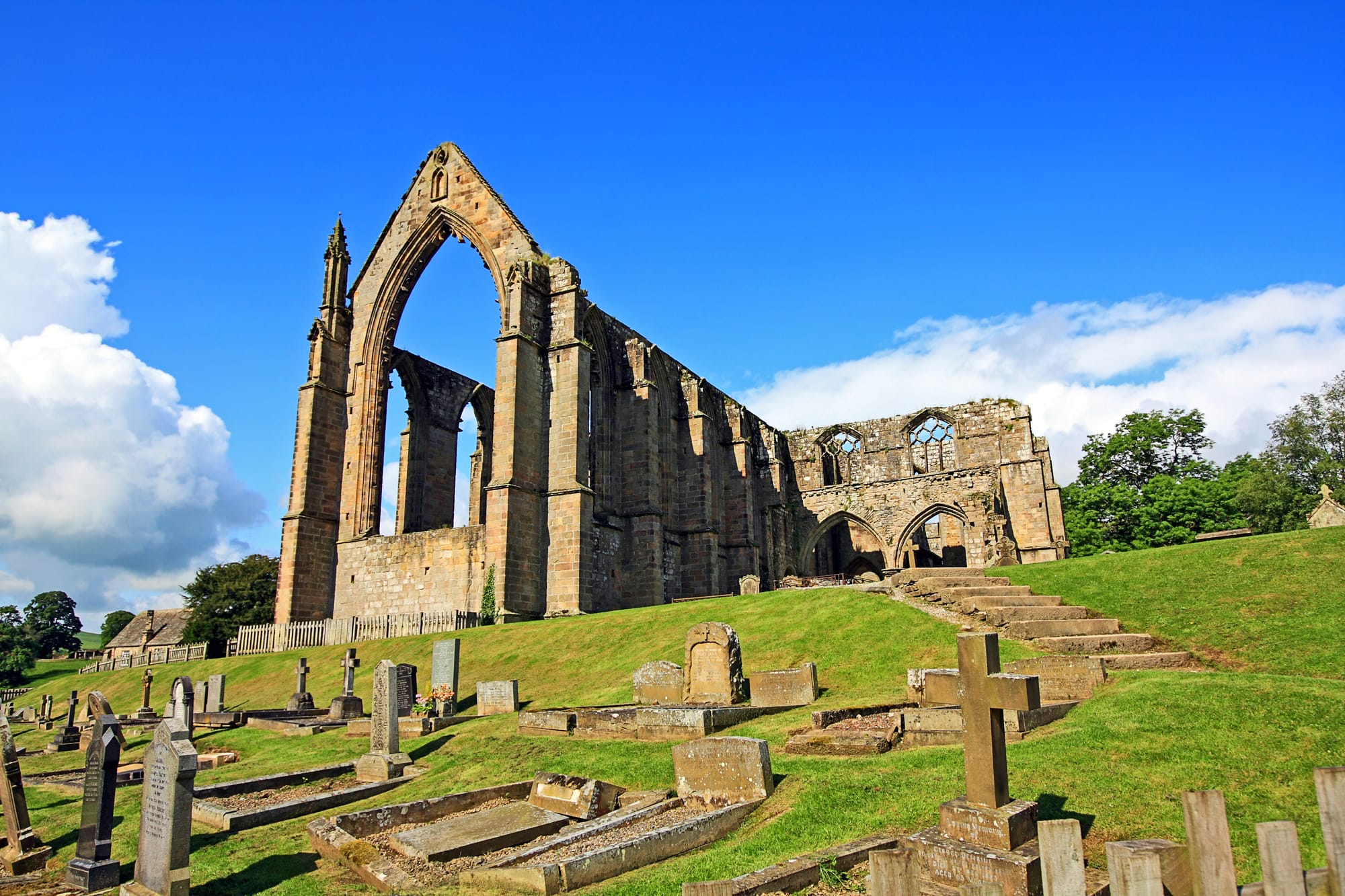
Bolton Abbey, sitting in the heart of the Yorkshire Dales near Skipton, is an iconic estate with a rich historical tapestry and a variety of outdoor activities suitable for families.
Key Details
- Location: Wharfedale, North Yorkshire, England
- Current Estate Holder: Duke of Devonshire
- Area: Approximately 30,000 acres
Historical Significance
The Bolton Abbey estate takes its name from the ruins of the 12th-century Augustinian monastery, known as Bolton Priory. The priory was dissolved in 1539 during the Dissolution of the Monasteries ordered by King Henry VIII. Its remnants, alongside the surrounding area, offer significant insight into England's ecclesiastical and cultural history.
Visitor Information
- Opening Times: Vary throughout the year, check the official website for current times.
- Tickets: Must be purchased for entry; season memberships and day tickets are available.
- Access: Over 80 miles of footpaths provide ample walking and exploration opportunities.
- Facilities: Car parks, tea rooms, and a variety of outdoor spaces.
- Activities: Includes fishing, walking, and family-friendly events.
Visitors are encouraged to verify current information before planning their trip, as details like opening times and ticket availability may change.
Selby Abbey
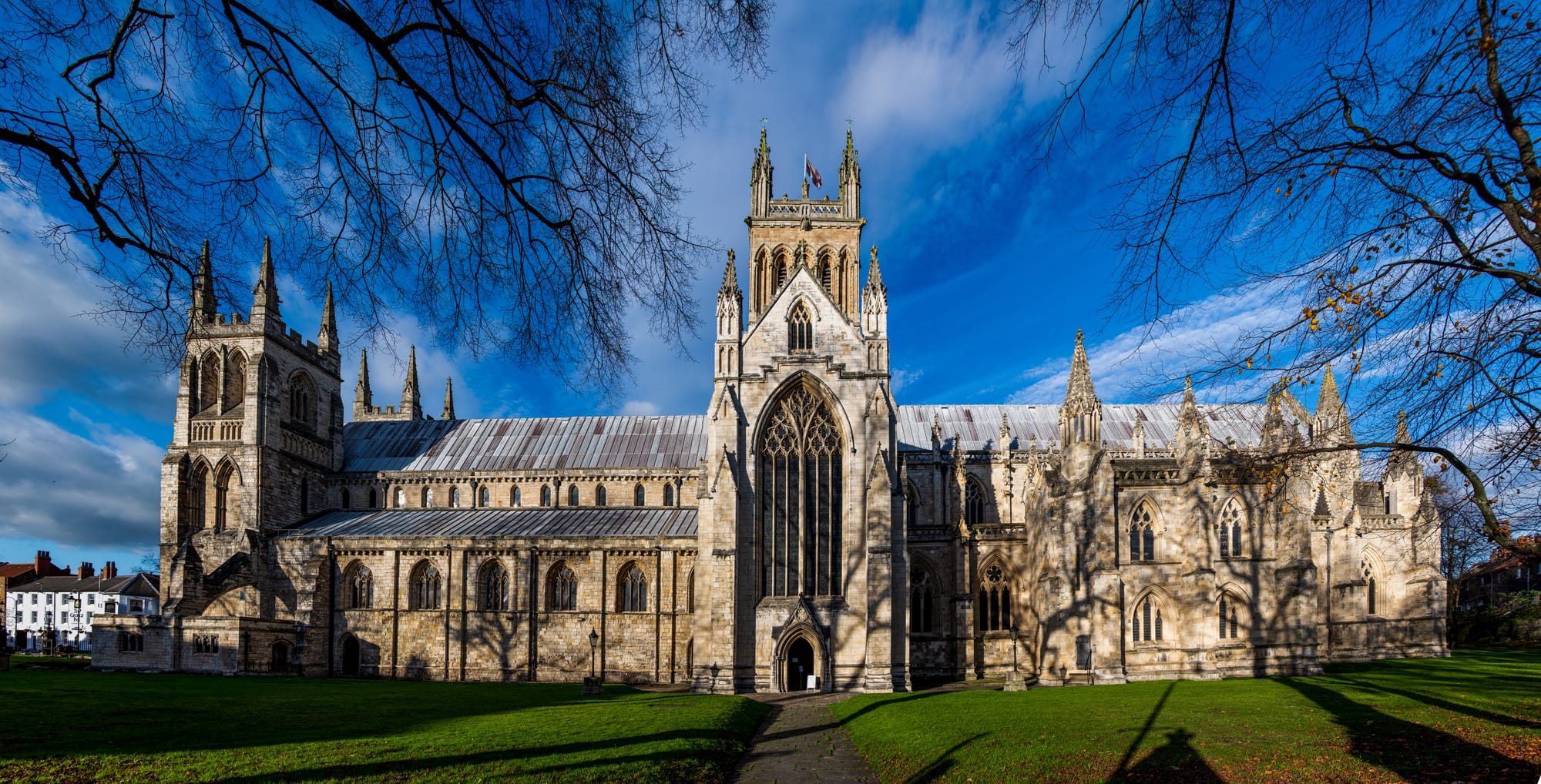
Easily one of only most impressive abbeys in Yorkshire, Selby Abbey is renowned for its impressive architecture and centuries of religious and community service. Located in the small town of Selby, North Yorkshire, it is a prominent feature steeped in history.
Key Details
- Location: Selby, North Yorkshire, England
- Denomination: Anglican
- Architectural style: Norman and Gothic
- Affiliation: Member of the Major Churches Network
Historical Significance
Founded in 1069, Selby Abbey was originally a Benedictine abbey. Despite the Dissolution of the Monasteries, it remains one of the few abbey churches from the medieval period still standing today. It holds the distinction of being a Mitred Abbey, notable for its monastic history and association with the Norman Conquest.
Visitor Information
- Opening Times: Open daily; specific hours vary seasonally
- Entry: Free, donations welcome
- Facilities: Gift shop, guided tours available
- Accessibility: Accessible to wheelchair users, with certain restrictions due to the historical structure
Jervaulx Abbey
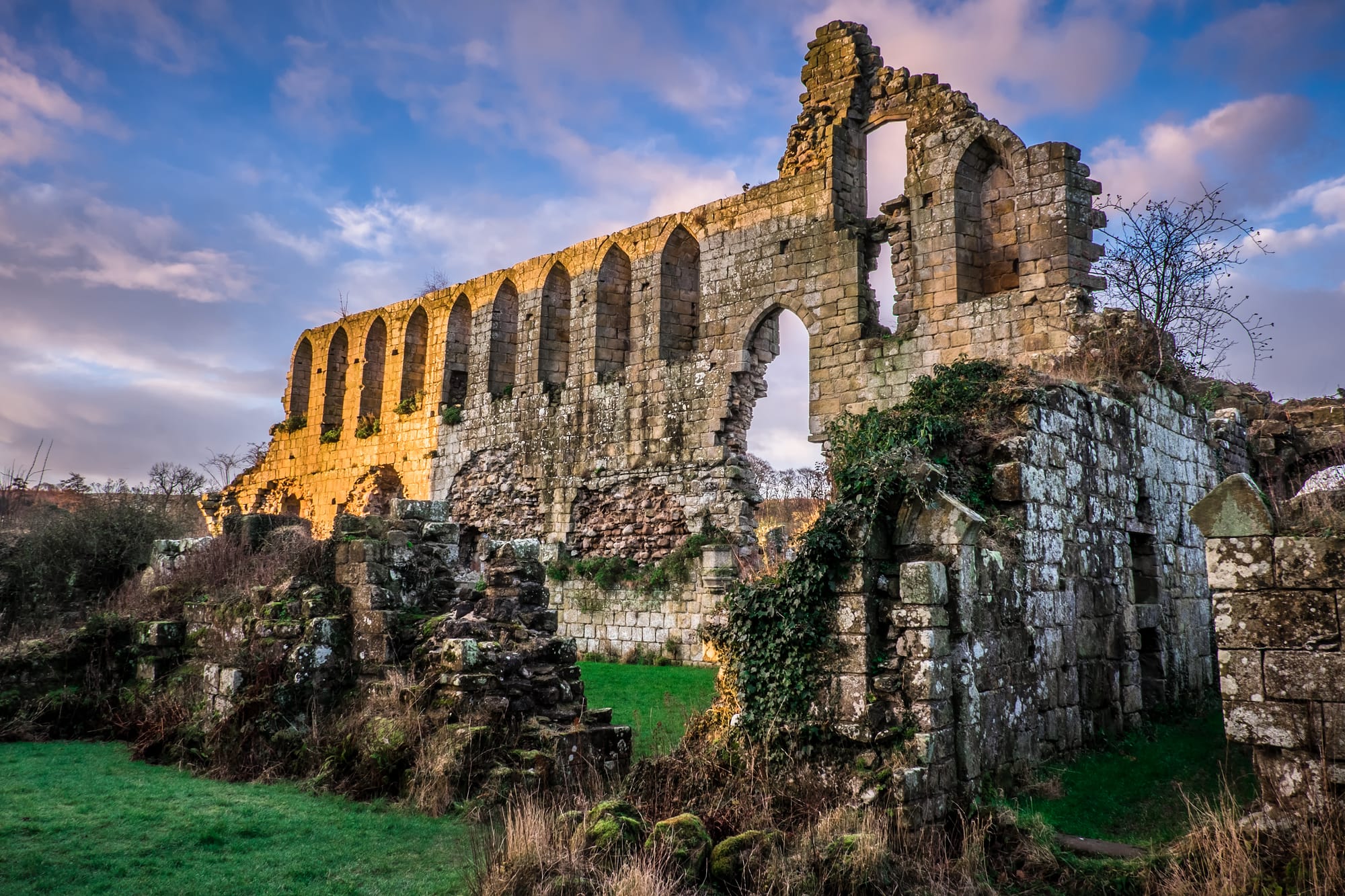
Jervaulx Abbey, set in the scenic Yorkshire Dales, holds a rich tapestry of history dating back to the 12th century. It is renowned for its tranquil beauty and the role it played in the monastic life of the region.
Key Details
- Location: East Witton, North Yorkshire, England
- Dedication: St. Mary
- Establishment: 1156
- Listing: Grade I listed building
Historical Significance
Jervaulx Abbey was once a thriving hub of Cistercian monastic life. The abbey's foundation in 1156 marked the beginning of a spiritual and agricultural centre within North Yorkshire. The monks of Jervaulx were instrumental in the wool trade, significantly contributing to the economy of the region. Despite suffering destruction during the Dissolution of the Monasteries in the 16th century, today it stands as a testament to its historical significance, with its ruins evoking the grandeur of its past.
Visitor Information
- Opening Times: Year-round from dawn till dusk
- Address: Jervaulx, Ripon, North Yorkshire
- Grid Reference: SE 1678 8568
- Admission: Relies on visitor contributions and wedding events for maintenance
The abbey operates independently of major heritage organisations, relying on the generosity of its visitors to preserve its serene ruins. It offers a unique glimpse into medieval monastic life and the history of Yorkshire.
Coverham Abbey
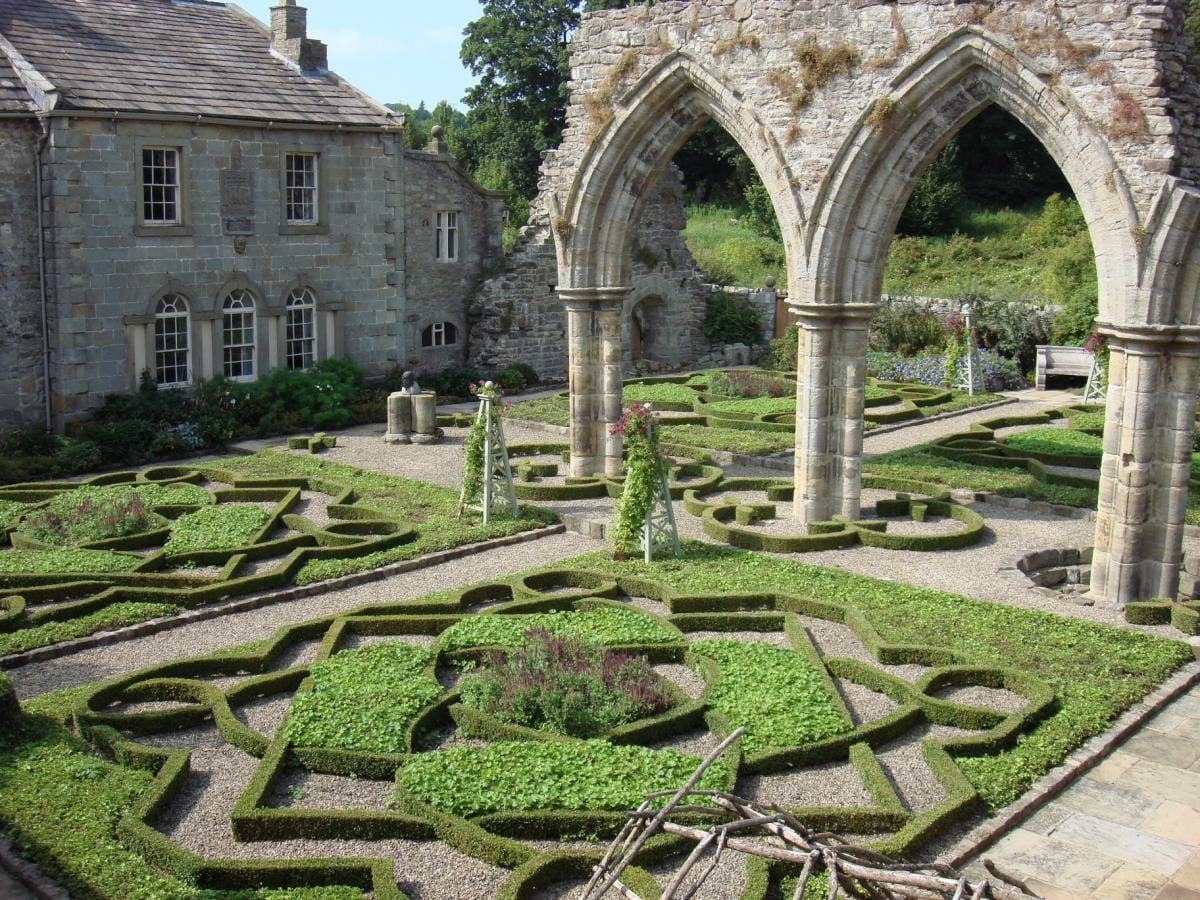
Coverham Abbey, nestled in the Yorkshire Dales, boasts a rich history dating back to the 12th century. Founded by Helewise, a prominent figure of the time, it stands as a testament to Yorkshire's monastic heritage.
Key Details
- Location: Coverham, North Yorkshire, England
- Founded: 1190 by Helewise, wife of Robert of Middleham
- Denomination: Premonstratensian Order
- Dissolution: 1536 during the Dissolution of the Monasteries
Historical Significance
Coverham Abbey was established by Helewise, the daughter of Ranulph de Glanville and wife of Robert, Lord of Middleham. Initially located at Swainby, the abbey was moved to Coverham in 1212 by Ranulph Fitz-Robert, Helewise's son. It bears historical importance due to its affiliation with the Premonstratensian order, known for their active role in parish work and emphasis on community involvement.
Visitor Information
- Access: Visitors can explore the ruins and the surrounding area, taking in the tranquil atmosphere of the Dales.
- Facilities: Limited facilities are available, so planning ahead is advisable.
- Preservation Status: It is a Scheduled Monument and listed on the National Heritage List for England.
Visitors are encouraged to respect the historic site and its preservation efforts for future generations to experience.
Easby Abbey
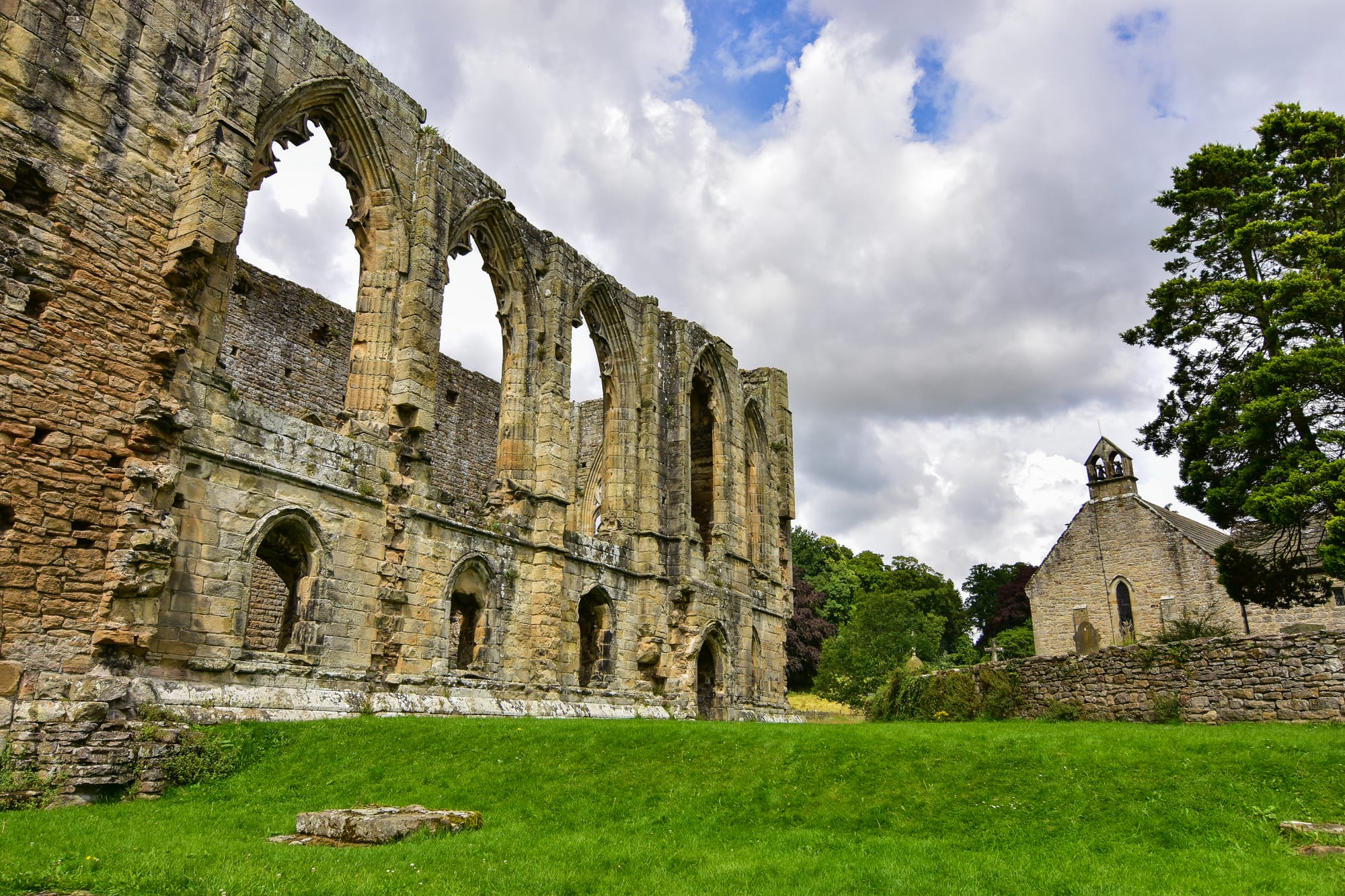
Easby Abbey reflects a narrative steeped in history, nestled in North Yorkshire's picturesque landscapes. This site offers a glimpse into England's monastic past and bears significant historical value, along with providing details for contemporary visitors.
Key Details
- Location: Easby, Richmond, North Yorkshire, DL10 7EU
- Founded: The establishment of Easby Abbey dates to 1152.
- Order: Premonstratensian Canons
Historical Significance
Easby Abbey, also known as the Abbey of St Agatha, is a ruin of a Premonstratensian abbey located 1.5 miles south of Richmond in North Yorkshire. It found its place in history when Roald, Constable of Richmond Castle, granted land to Premonstratensian canons. As recorded in the Domesday survey of 1086, an important local landowner, Enisan Murdac, held the hamlet of Easby. The abbey remains a testament to the ecclesiastical history of the 12th century and bore witness to the widespread monastic dissolutions under Henry VIII.
Visitor Information
- Access:
- Public Admission: Free
- Open Days: Daily visits are available; check for specific timings.
- Facilities:
- The site is maintained by English Heritage.
- Nearby is an active parish church with 13th-century artifact exhibits.
- Getting There:
- Easby Abbey can be approached via a riverside walk from Richmond Castle.
- The site is privately owned but open for the public to explore.
Kirkstall Abbey
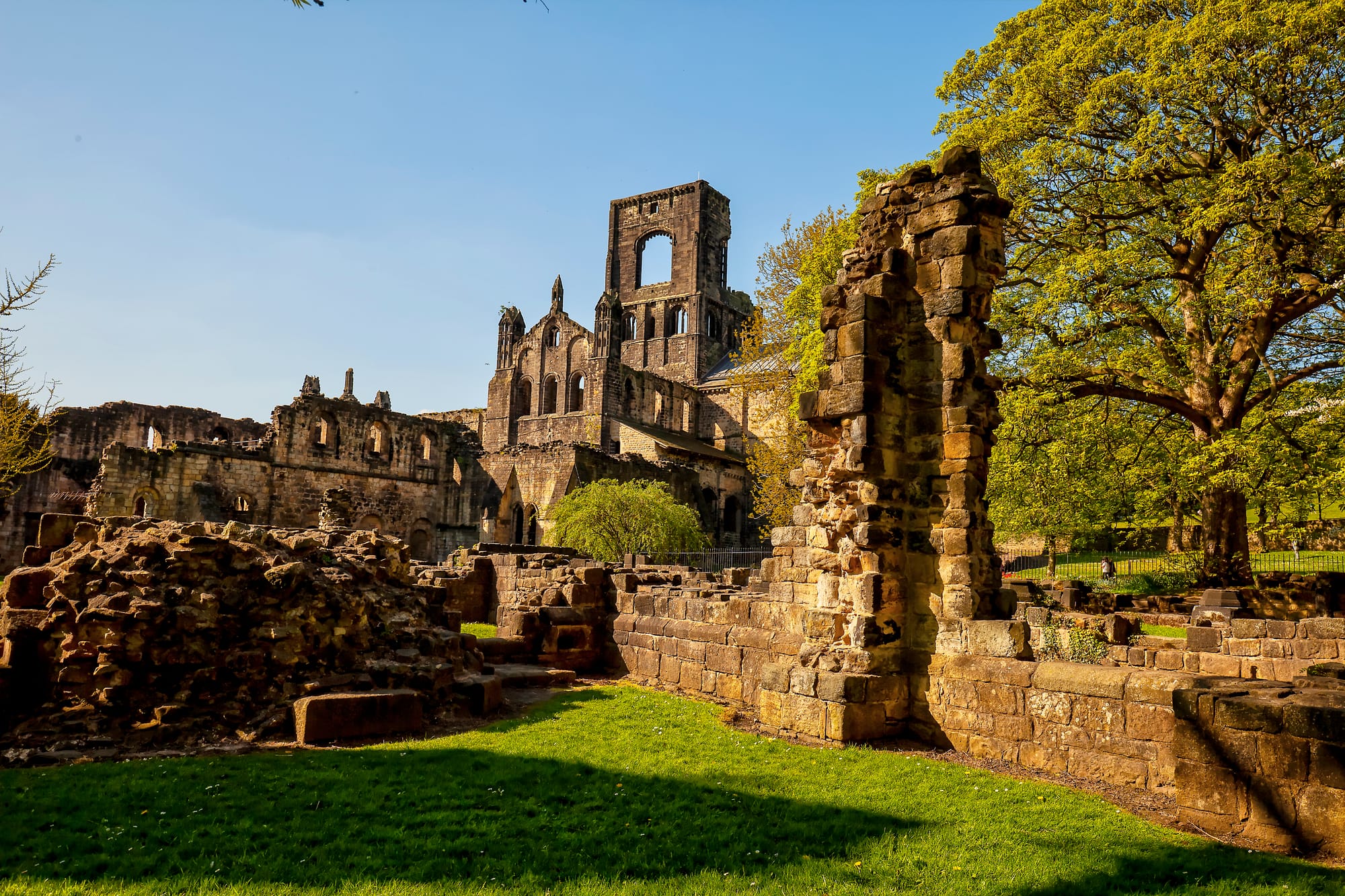
Kirkstall Abbey holds a unique place in British history as one of the most complete Cistercian monasteries in England. Notably set in a picturesque park along the River Aire, its ruins continue to captivate visitors and historians alike.
Key Details
- Location: Kirkstall, Leeds, West Yorkshire, England
- Established: circa 1152
- Order: Cistercian
Historical Significance
Kirkstall Abbey was founded in approximately 1152 and remained active until the Dissolution of the Monasteries under King Henry VIII. It stands as a prime example of medieval Cistercian architecture and offers a visual narrative of monastic life during the Middle Ages. The abbey was disestablished during the sweeping religious reforms of the 16th century, yet its substantial remains provide valuable insights into the Cistercian order's way of life.
Visitor Information
Opening Hours
- Tuesday to Sunday: 10:00 - 16:00
- Last admission: 15:30
- Note: Closed on Mondays except on Bank Holidays
Address
- Abbey Road, Kirkstall, Leeds, LS5 3EH
Visitors can explore the grounds and the well-preserved ruins, which offer a glimpse into the past against the backdrop of modern-day Leeds. Admission details and specific seasonal opening times should be verified through official channels to ensure a well-planned visit.
Roche Abbey
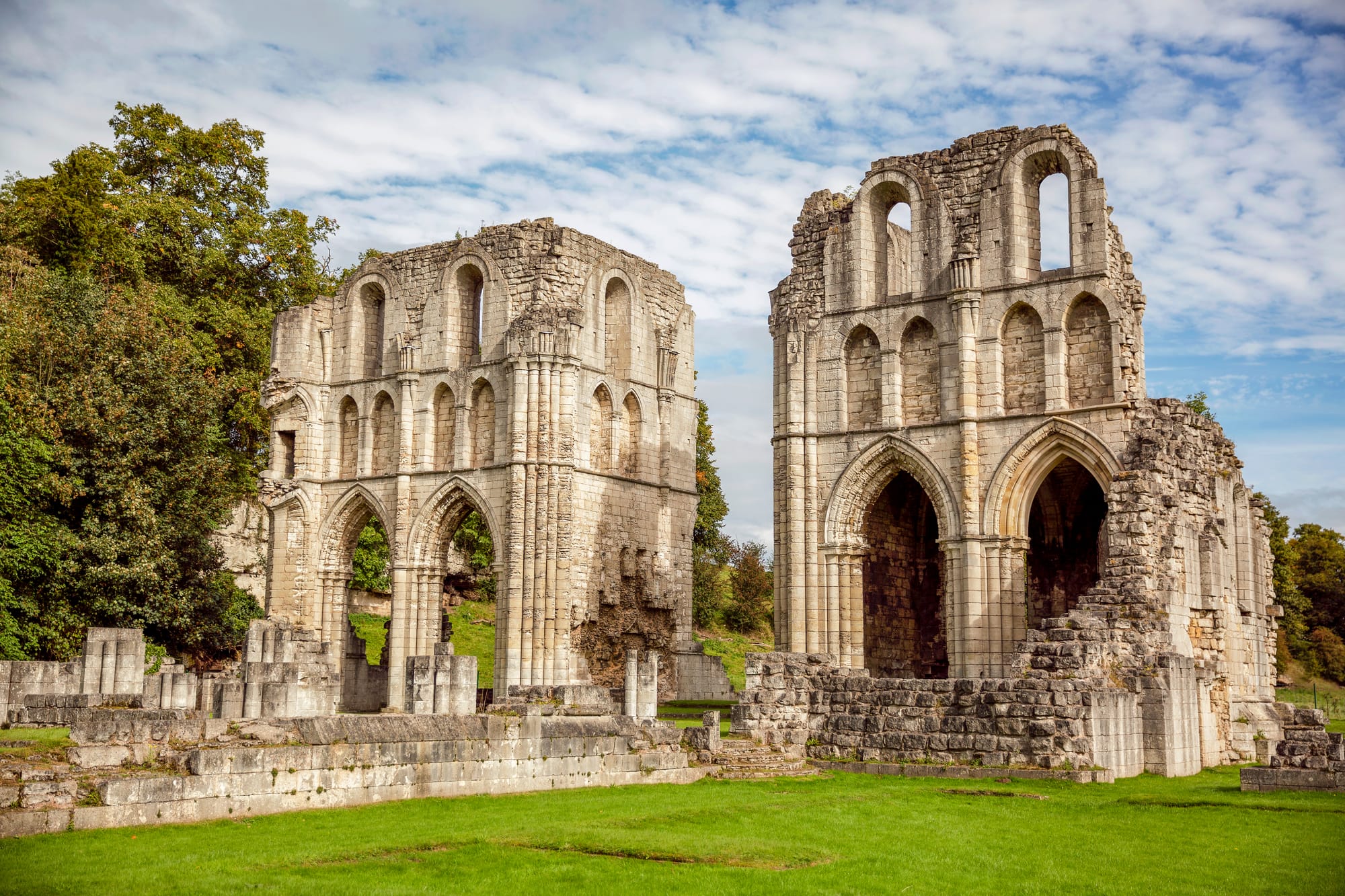
Nestled in the South Yorkshire countryside, Roche Abbey is a testament to medieval monastic architecture, with its history dating back to the 12th century. This site, maintained by English Heritage, is a significant landmark, encapsulating the region's rich historical tapestry and offering insights into monastic life.
Key Details
Location: Maltby, Rotherham, South Yorkshire, S66 8NW
Architectural Style: Gothic
Founded: 1147
Managed by: English Heritage
Historical Significance
Roche Abbey was founded in 1147 by Cistercian monks and quickly became a focal point of religious activity in the region. It showcases the early Gothic style and provides insight into the aesthetic and practical functions of such abbeys. It's a scheduled monument and a Grade II* listed building, reflecting its importance in national heritage.
Visitor Information
Opening Times: Reopens in Spring 2024
Facilities: Visitor facilities are indicated on-site.
The Historical Significance of Yorkshire Abbeys
Yorkshire's abbeys are a testament to medieval piety and the dramatic shifts in religion and power dynamics that ensued during the reign of Henry VIII.
These structures were at the heart of religious and economic life in medieval England.
Early Foundations
The establishment of monastic communities in Yorkshire began as early as the 12th century, with abbeys like Rievaulx founded in 1132 by Cistercian monks.
Rievaulx Abbey was significant as the first Cistercian base in northern England, acting as a springboard for the spread of the order in Britain.
The construction of these abbeys, often in remote areas, transformed the surrounding economic landscape. Monks were known for their skills in farming, industry, and education, which often turned these abbeys into hubs of productivity and learning.
Impact of the Dissolution
The Dissolution of the Monasteries, a policy enacted under Henry VIII, had a profound impact on the monastic communities of Yorkshire.
In the 1530s, the King, motivated by a desire for independence from the Catholic Church and financial gain, systematically disbanded monastic institutions.
Many abbeys, such as those in Yorkshire, were stripped of their wealth, their buildings destroyed or left to ruin.
The Dissolution not only altered the religious landscape but also redistributed wealth and power, signifying a monumental shift in English socio-political dynamics.
Architecture and Design
Yorkshire's abbey ruins provide an insightful window into the architectural styles and design elements that characterize monastic life from centuries past.
Particular attention is given to the dominant Gothic architectural influences and the utility-focused design of monastic structures.
Gothic Influences
Yorkshire abbeys exhibit distinct Gothic architecture features, particularly renowned for their high pointed arches, ribbed vaults, and flying buttresses.
These elements combined not only to create awe-inspiring structures that touched the heavens but also to support taller, more complex building designs.
An exemplary feature often found in the ruins is the rose window, a hallmark of Gothic design.
These intricate circular windows, notably the ruined great rose window at Byland Abbey, inspired many other ecclesiastical buildings, including the famous York Minster.
- Characteristics of Gothic Architecture in Yorkshire's Abbeys:
- Pointed arches
- Ribbed vaults
- Flying buttresses
- Large windows often filled with stained glass
Monastic Structures
The layout of Yorkshire's abbeys adhered to a functional design centred around monastic life.
The refectory, the dining hall, was an integral part of the abbey, where monks gathered for communal meals.
Structurally, refectories were substantial halls, often with high ceilings and supported by rows of columns.
The gatehouse served as the guarded entrance, projecting the abbey's strength and often housing the porter.
- Essential Components of Abbey Design:
- The Refectory: for communal dining
- The Gatehouse: as the protective entrance
The disciplined approach to design in these monastic structures highlights not only a spiritual commitment but also an advanced understanding of space utilisation that continues to fascinate architects, historians, and visitors alike.
Preservation and Conservation Efforts
Preservation and conservation of Yorkshire's abbeys involve meticulous work to maintain and protect these historic structures. Various organisations, including English Heritage and the National Trust, have undertaken significant roles in these efforts.
English Heritage
English Heritage is tasked with the conservation of numerous abbeys in Yorkshire, including Whitby Abbey and Rievaulx Abbey.
Rievaulx Abbey, which is a World Heritage Site, has received extensive conservation work to preserve its structural integrity and aesthetic glory.
English Heritage ensures that repairs are sympathetic to the original construction methods and materials.
For example, at Whitby Abbey, the conservation strategy may include:
- Stone Conservation: Replacing damaged stonework with new pieces that match the historic fabric.
- Visitor Infrastructure: Adding paths and barriers to reduce wear on delicate grounds.
National Trust
The National Trust operates in a similar vein but with different properties.
One notable abbey under their guardianship is Fountains Abbey, which is also a designated UNESCO World Heritage Site.
The Trust's approach to conservation includes:
- Landscape Management: Protecting the surrounding landscapes that contribute to the site's significance.
- Public Engagement: Developing educational programmes to foster a connection between the abbey and its visitors.
Both organisations prioritise the maintenance of these sites to ensure they remain as accurate reflections of their historical states as possible, allowing future generations to experience and learn from these remarkable remnants of history.
Frequently Asked Questions
This section provides answers to some common questions about the abbeys in Yorkshire, offering insights into their historical significance, must-see ruins, and cultural heritage.
What are the most historically significant abbeys in Yorkshire?
The most historically significant abbeys in Yorkshire include Rievaulx Abbey, which was the first Cistercian outpost in the north of England, and Fountains Abbey in Ripon, renowned for its extensive and well-preserved medieval ruins.
Can you list some must-see abbeys in Yorkshire?
Some of the must-see abbey ruins in Yorkshire are Fountains Abbey, Bolton Abbey, and the beautiful remains at Bolton Priory in the Yorkshire Dales National Park.
What factors contributed to the abundance of abbey ruins throughout Yorkshire?
The abundance of abbey ruins in Yorkshire largely resulted from the dissolution of the monasteries under Henry VIII in the 16th century, which led to the destruction and abandonment of many ecclesiastical buildings.
Could you explain the difference between an abbey and a priory?
An abbey is a monastery run by an abbot or abbess and is typically independent, whereas a priory is subordinate to a larger religious institution and is headed by a prior or prioress.
Which Yorkshire abbey is recognised as the largest in terms of physical size?
Fountains Abbey, located near Ripon in North Yorkshire, is recognised as the largest abbey in Yorkshire in terms of physical size, combining medieval architecture with 18th-century landscaped gardens.
How does the history of Yorkshire's abbeys reflect on the region's cultural heritage?
The history of Yorkshire's abbeys reflects the region's cultural heritage through tales of devotion, medieval power structures, and the significant role that these religious institutions played in shaping the social and economic landscape of England.






